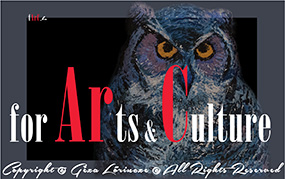|
|
|
|

|
|
|
 |
On the left detail of Buda Castle Coronation Church of Our Lady, more commonly known as Matthias Church is seen in Buda Castle Quarter. The first church on this site was founded by St. Stephen, King of Hungary in the 11th century. After a few recontructions, in the second half of the 19th century, the church was largely restored to its original grandiosity under the guidance of architect Frigyes Schulek. Schulek held the original 13th-century plans and uncovered Gothic elements that lost in the past. Colorful roof tiles were also added, which we admire every time we are here. The reconstruction of The Church of Our Lady was completed by 1896, the year of the Millennium. - In the middle we can see Alajos Stróbl's statue of King St. Stephen. The bronze figure of our first Christian King sits astride a horse covered with the coronation cloak. Double cross is in his hand, and the crown is on his head, above which there is a guilded glory. The reliefs at the bottom of the composition depict important events of St. Stephen’s reign. - On the right detail of Fisherman's Bastion is seen. It was designed in neo-Gothic and neo-Romanesque style according tothe plans of Hungarian architect Frigyes Schulek. It was built between 1895 and 1902 in Buda Castle Quarter. Its 7 towers with pointed tops represent the 7 Hungarian (Magyar) tribes that settled in the Carpathian Basin at the end of the 9th century. • A Mátyás templom, hivatalos nevén a Budavári Nagyboldogasszony templom közelében állunk. Az első templomot Szent István király alapította itt a 11. század elején. Több átalakítást, áttervezést követően I. Ferenc József 1873-ban kelt határozata alapján 1874-1896 között Schulek Frigyes vezetésével alakult ki a mai arculat. Az általa hűen rekonstruált, kisebb részben pedig művészi igényességgel újratervezett, templom neogótikus építészetünk kiemelkedő alkotása. – A kép közepén Stróbl Alajos Szent Istvánt ábrázoló lovasszobrát láthatjuk, melynek megalkotásában részt vett Schulek Frigyes, mint építész, valamint Róna József és Tsa, mint bronzöntő is. A királyon palást, fején korona, jobb kezében kettős kereszt van, a ló testét díszes takaró fedi. Az alépítmény oldalain lévő domborművek István uralkodásának kiemelkedő mozzanatait rögzítik. A szobrot 1906-ban avatták fel. – A jobb oldalon a Halászbástya egyik részlete látható. A régi budai várfalak helyén épült Schulek Frigyes tervei alapján 1895 és 1902 között, neogótikus és neoromán stílusban. Hegyes süvegű kőtornyai a hét magyar honfoglaló vezért jelképezik. A Budai Várnegyed részeként, a Halászbástya 1987 óta Budapest világörökségi helyszíneinek egyike. |
|
You might find yourself in this photo. Write me immediately if you want me to remove
it! Write me immediately if you want me to remove
it! |
|
Copyright © 2005-2019 · Géza Lőrincze · GLobePhoto · Photography for Arts and Culture: 4ArC · All Rights Reserved
|
|
Contact for more info
and/or higher resolution photo 4ArC GLobePhoto Budapest-Hungary
PhotoMaster mySlideshows
Hungary-must-see Hungary Photo |
|
Higher resolution photos - Slideshow 1 Slideshow 2 Slideshow 3
Hungary Culture |
|
|
|
|
|
|
|


 Buda Castle Quarter
Buda Castle Quarter 
 Write me immediately if you want me to remove
it!
Write me immediately if you want me to remove
it!





